“Which English translation of The Tale of Genji should I read?”
So you want to read the world’s oldest novel, which is over a thousand pages, and you don’t read Japanese.
No problem.
There are four complete English versions of Murasaki Shikibu’s thousand-year-old episodic Buddhist tale of love and loss in Heian Japan. The novel has also been abridged and published in incomplete translations as well, so there’s definitely some potential for confusion. Keep reading to learn how to choose an edition that’s right for you.
The Tale of Genji: Translations
There are four major, complete English translations of The Tale of Genji, shown below in chronological order along with three partial translations. They are all in print.
- 1882 – Suematso Kencho (partial)
- 1933 – Arthur Waley
- 1976 – Edward G. Seidensticker
- 1994 – Helen Craig McCullough (partial)
- 2001 – Royall Tyler
- 2013 – Kazuyuki Hijiya (partial)
- 2015 – Dennis Washburn
Below are details about each of these English translations.
The Tale of Genji: the “Names” of the Characters
The names used to refer to the characters in the English translations are variations on traditional names that readers have assigned to the characters based on the important situations in which we encounter them or on significant poems from the chapters in which they appear. In the original Japanese, and in the text of the Tyler translation, characters are referred to in the narration and dialogue by some kind of title, or even just a pronoun, rather than a personal name. Readers need to infer the identity of the person being referred to using contextual clues.
Is The Tale of Genji the world’s first novel?
It is often hailed as the first work that has what we now consider to be the defining characteristics of a novel, which are something like realism and psychological depth in a story about stuff that didn’t actually happen to people who didn’t actually exist. Previous literary works were arguably all either chronicles of real people and events, fictional but flat didactic parables, or examples of some other genre, though pigeonholing the products of the mind is never terribly easy. If all else fails, we could call it a book of poetry, because there are 795 poems in the text!
Who Was Suematsu Kencho?
He was a Japanese writer and political figure who studied law at Cambridge. His name was previously romanized as ‘Suyematz Kenchio’. Suematsu is his surname, so his name sometimes appears as ‘Kencho Suematsu’.
About the Suematsu translation of The Tale of Genji
- It is available free because it is no longer under copyright.
- It contains only the first 17 chapters out of 54 total.
- The text contains explanatory footnotes.
- Most poems are rendered in a four-line rhyming format.
Extract from the Suematsu translation of The Tale of Genji
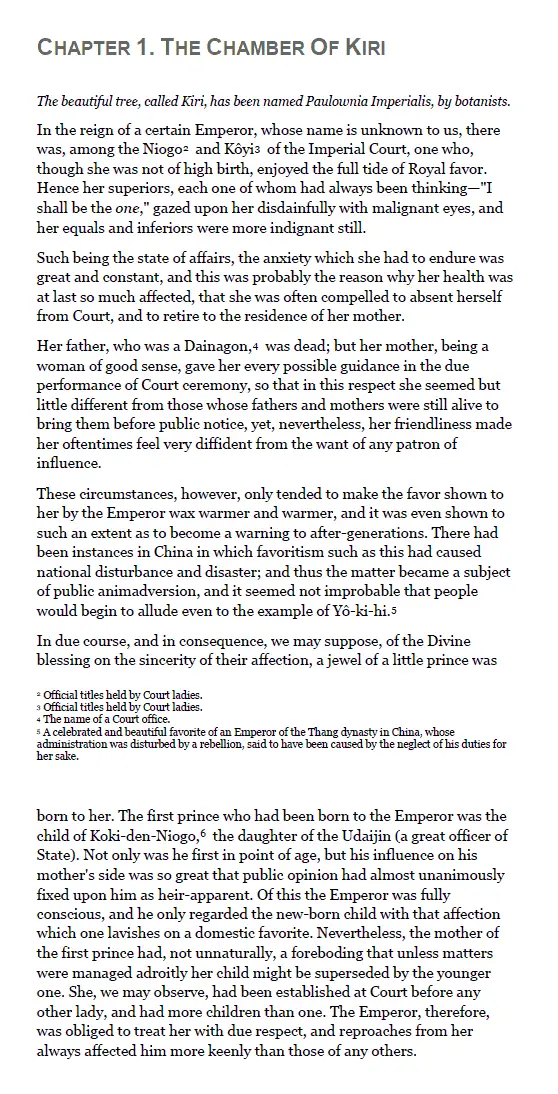
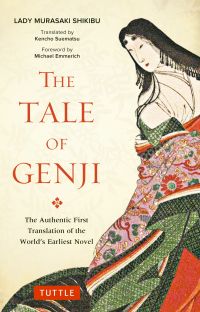
Get the Tuttle Suematsu translation of The Tale of Genji
SELECTED CHAPTERS ONLY. Tuttle published the Suematsu translation with an introduction by Terence Barrow in 1974 and reprinted it in 2018. It contains a new foreword by Michael Emmerlich as well as Suematsu’s original introduction. The text retains Suematsu’s notes as footnotes.
Available as a paperback (ISBN 9784805314647, 224 pages).
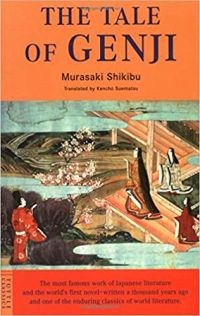
Get the Tuttle Suematsu translation of The Tale of Genji
SELECTED CHAPTERS ONLY. The ebook contains the content of the 1974 Tuttle edition, which has an introduction by Terence Barrow, Suematsu’s original introduction, and Suematsu’s notes as footnotes.
Available as an ebook.
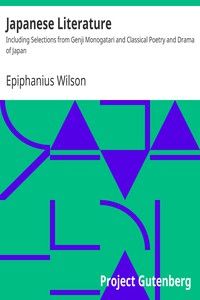
Get the Project Gutenberg Suematsu translation of The Tale of Genji
SELECTED CHAPTERS ONLY. Since the copyright of the Suematsu translation has expired, you can get a legitimate copy online for free. Japanese Literature, edited by Epiphanius Wilson, contains: an introduction to Genji Monogatari by Suyematz Kenchio; the Suematsu partial translation of The Tale of Genji (17 chapters); notes at the end of each chapter; a selection of Japanese poems and plays translated by Basil Hall Chamberlain.
Available as an ebook.
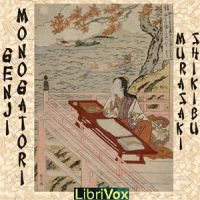
Get the LibriVox Suematsu translation of The Tale of Genji
SELECTED CHAPTERS ONLY. A group of volunteers used the public domain text of the Suematsu translation of The Tale of Genji (which contains the first 17 chapters only) to create a public domain audio recording that runs 8 hours and 52 minutes.
Available as an audiobook.
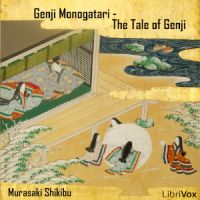
Get the LibriVox Suematsu translation of The Tale of Genji
SELECTED CHAPTERS ONLY. One individual volunteer used the public domain text of the Suematsu translation of The Tale of Genji (which contains the first 17 chapters only) to create a public domain audio recording that runs 8 hours and 1 minute.
Available as an audiobook.
Who Was Arthur Waley?
He was an Englishman who published English translations of many Chinese and Japanese works and wrote in English about East Asian history and culture after teaching himself to read Chinese and Japanese while working at the British Museum. He never visited China or Japan, or learned to speak Chinese or Japanese.
About the Waley translation of The Tale of Genji
- The text is considered a loose or even a flawed translation in terms of style and content (some of which is wholly invented!) but is still read, and still admired for its own sake and its role in bringing the work to the attention of the West.
- The old-fashioned English language style may be difficult for some readers.
- The poems that characters pass to one another in writing are transformed into dialogue.
- It is missing chapter 38, “The Bell Cricket”.
- It was divided by Waley and published in six parts, titled:
- Part 1: The Tale of Genji (1925)
- Part 2: The Sacred Tree (1926)
- Part 3: A Wreath of Cloud (1927)
- Part 4: Blue Trousers (1928)
- Part 5: the Lady of the Boat (1932)
- Part 6: The Bridge of Dreams (1933)
Extract from the Waley translation of The Tale of Genji
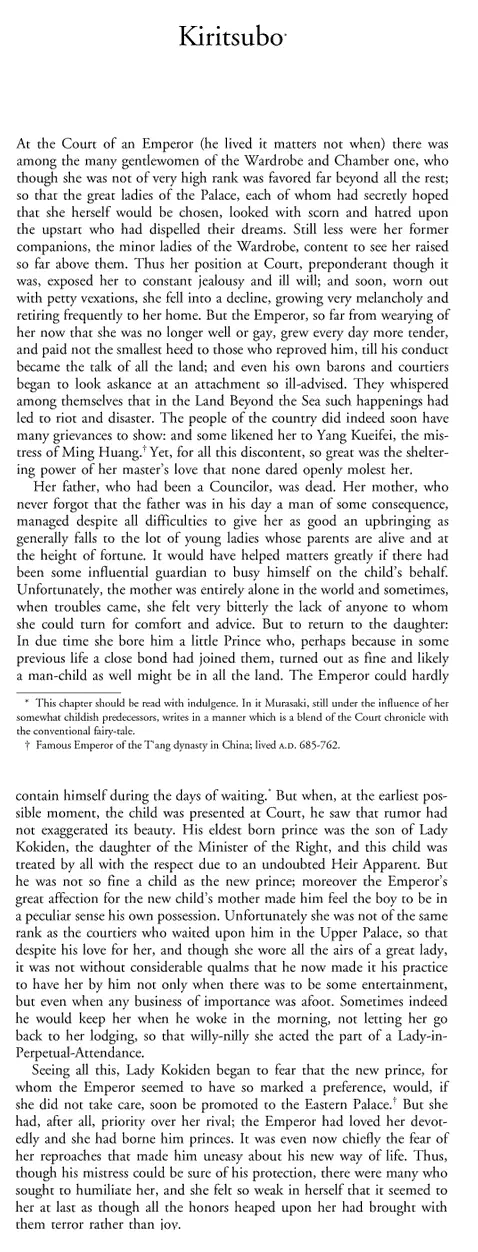
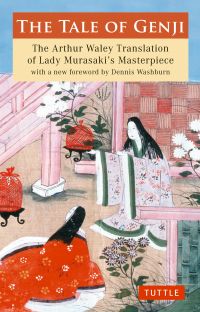
Get the Tuttle Waley translation of The Tale of Genji
Includes a foreword by translator Dennis Washburn, an introduction by Waley, and footnotes.
Available as a paperback (ISBN 9784805310816, 1184 pages).
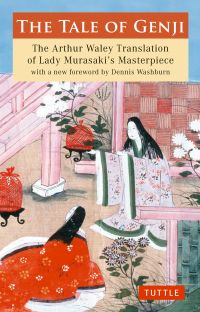
Get the Tuttle Waley translation of The Tale of Genji
Includes a foreword by translator Dennis Washburn, an introduction by Waley, and footnotes.
Available as an ebook.
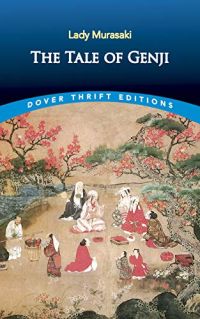
Get the Dover Waley translation of The Tale of Genji
For copyright reasons, this book contains ONLY PART 1 (THE FIRST 9 CHAPTERS).
Available as a paperback (ISBN 9780486414157, 208 pages).
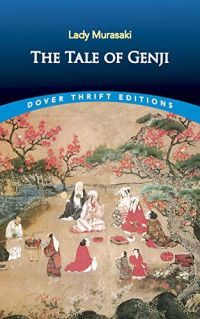
Get the Dover Waley translation of The Tale of Genji
For copyright reasons, this book contains ONLY PART 1 (THE FIRST 9 CHAPTERS).
Available as an ebook.
Who was Edward G. Seidensticker?
Seidensticker was an American writer and translator. According to Wikipedia, he learned Japanese in a military program in the 1940s and was tasked with translating enemy documents and interrogating Japanese prisoners of war. After the war ended, he studied Japanese literature at the University of Tokyo. Subsequently, he worked as a teacher and translator of Japanese.
He published a book called Genji Days containing excerpts from his diary of the time when he was working on his translation (the 1960s).
About the Seidensticker translation of The Tale of Genji
- The text uses the traditional nicknames for characters.
- It is faithful to the original, lacking the kind of whimsical cuts and additions Waley made.
- The poems are rendered in two non-rhyming lines.
- Obscure statements and passages are not always explained in the relatively sparse notes.
- Illustrations are old woodcuts depicting scenes from the novel. They were created by artist Yamamoto Shunsho for an illustrated edition of The Tale of Genji that was published in 1650.
Extract from the Seidensticker translation of The Tale of Genji
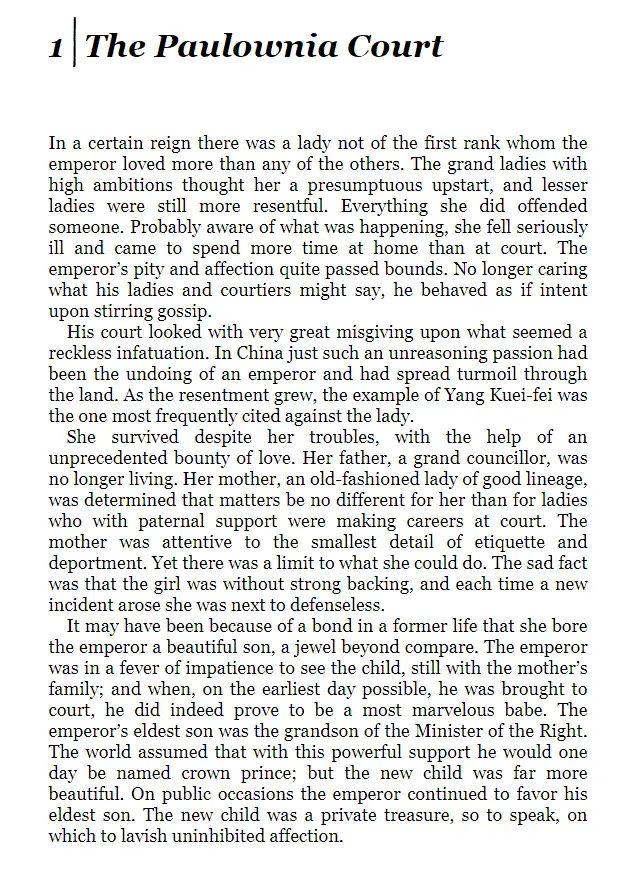
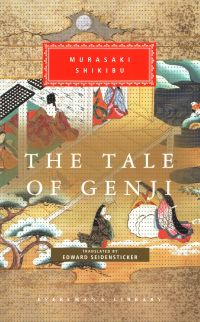
Get the Everyman's Library Seidensticker translation of The Tale of Genji
Includes an introduction by Seidensticker. (The product description says "abridged" but I conclude from the pagecount that it's not.)
Available as a hardcover (ISBN 9780679417385, 1224 pages).
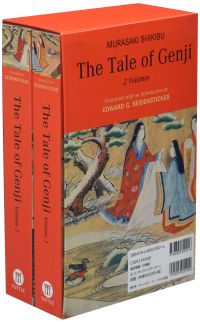
Get the Tuttle Seidensticker translation of The Tale of Genji
The Amazon page says this ISBN is a hardcover and says it’s in Japanese. It’s not hardcover, and it’s not in Japanese, I promise. It's a box set of two paperbacks of the Seidensticker English translation of The Tale of Genji. It includes an introduction, a list of principal characters, footnotes, many concerning the poems, and some nice old woodcut illustrations.
Available as a boxed set of two paperbacks (ISBN 9784805309216, 1120 pages).
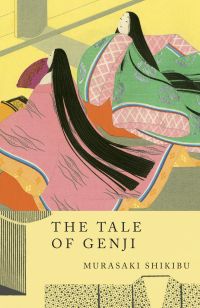
Get the Vintage Seidensticker translation of The Tale of Genji
SELECTED CHAPTERS ONLY. Contains a selection of 12 of the first 17 chapters. Chapters 2, 3, 6, 15 and 16 are omitted; the included chapters have not, for the most part, as explained in the introduction, been edited or shortened. Seidensticker says: “I made this abridgment at the request of the publisher of the complete work. The Tale of Genji is impossible to abridge effectively. Considering that the earlier chapters are by far the most widely read, these selections from the first seventeen chapters were simply the best that I could do.”
Available as a paperback (ISBN 9780679729532, 384 pages).
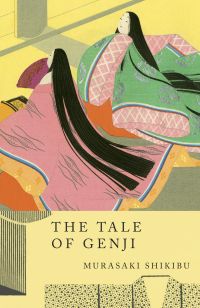
Get the Vintage Seidensticker translation of The Tale of Genji
SELECTED CHAPTERS ONLY. Contains a selection of 12 of the first 17 chapters. Chapters 2, 3, 6, 15 and 16 are omitted; the included chapters have not, for the most part, as explained in the introduction, been edited or shortened. Seidensticker says: “I made this abridgment at the request of the publisher of the complete work. The Tale of Genji is impossible to abridge effectively. Considering that the earlier chapters are by far the most widely read, these selections from the first seventeen chapters were simply the best that I could do.”
Available as an ebook (ISBN 9780307833525).
Who was Helen Craig McCullough?
She was an American academic and translator. She translated the entire Tale of the Heike from Japanese, but only translated part of The Tale of Genji.
About the McCullough translation of The Tale of Genji
- This edition contains ten non-consecutive chapters:
- Kiritsubo (Chapter 1)
- The Broom Tree (Chapter 2)
- Yugao (Chapter 4)
- Young Murasaki (Chapter 5)
- A Celebration Amid Autumn Leaves (chapter 7)
- Aoi (Chapter 9)
- Suma (Chapter 12)
- Akashi (Chapter 13)
- New Herbs: Part Two (Chapter 35)
- The Rites (Chapter 40)
- The text uses the traditional nicknames for characters.
- Poems are presented in five lines of romanized Japanese beside five lines of English.
- There are no illustrations.
- The text includes explanatory footnotes.
Extract from the McCullough translation of The Tale of Genji
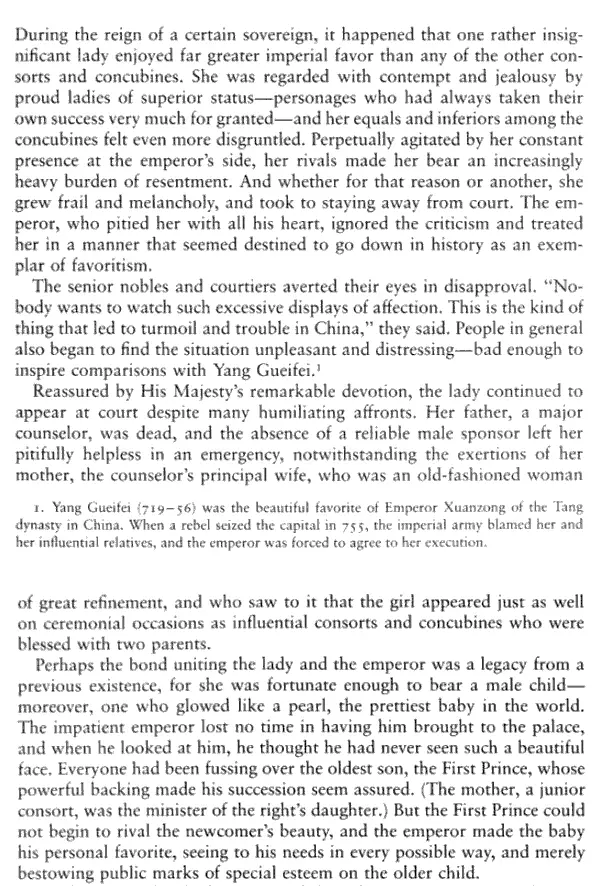
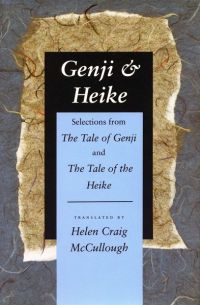
Get the Stanford University Press McCullough translation of Genji and Heike
SELECTED CHAPTERS ONLY. For each work (The Tale of Genji and The Tale of the Heike), this volume contains an introduction, a list of “principal characters”, a table of contents, and a selection from the text. The volume also contains some reference material. There is a brief explanation of offices, ranks, and the imperial palace. There are also two maps, a twenty-page glossary and a bibliography. The selections from The Tale of Genji are Chapters 1, 2, 4, 5, 7, 9, 12, 13, 35, and 40.
Available as a paperback (ISBN 9780804722582, 500 pages).
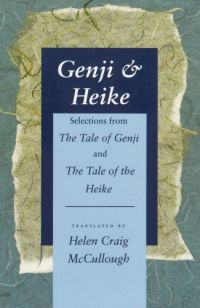
Get the Stanford University Press McCullough translation of Genji and Heike
SELECTED CHAPTERS ONLY. For each work (The Tale of Genji and The Tale of the Heike), this volume contains an introduction, a list of “principal characters”, a table of contents, and a selection from the text. The volume also contains some reference material. There is a brief explanation of offices, ranks, and the imperial palace. There are also two maps, a twenty-page glossary and a bibliography. The selections from The Tale of Genji are Chapters 1, 2, 4, 5, 7, 9, 12, 13, 35, and 40.
Available as a hardcover (ISBN 9780804722575, 500 pages).
Who is Royall Tyler?
He’s a retired academic and translator of Japanese literature. He’s a descendant of another guy named Royall Tyler. He has shared photos of wildlife and alpacas from his Australian farm on his Amazon author page. That’s awesome, and it’s awesome in a totally different way than translating a thousand-page, thousand-year-old Japanese book is awesome. After retirement, Tyler started his own book imprint, Blue-Tongue Books, and used it to publish additional writings about Japan and Japanese literature and drama. See below for Genji-related resources!
About the Tyler translation of The Tale of Genji
- The text does NOT use the very helpful traditional nicknames for characters, referring to them instead obliquely, by using pronouns, job title, or rank.
- It is considered more faithful to the original than the Waley and Seidensticker translations, deliberately using an elliptical, indirect style (which can be confusing).
- There are lots of footnotes, in part to make up for the indirectness.
- Illustrations show typical objects and actions of the time.
- The poems are rendered in two lines that follow the syllable pattern of the Japanese original (5-7-5 / 7-7).
Tyler takes with one hand and gives back with the other. His translation lacks character names, which makes keeping track of people quite difficult. On the other hand, it is peppered with explanatory notes which sometimes identify people and sometimes provide paraphrases and cultural context that, along with the resources stashed at the back of the book, greatly enrich the reading experience.
Personally, based on my experience reading Tyler (and then Seidensticker), I would NOT recommend reading the Tyler translation until you have already made yourself somewhat familiar with the story and characters, or are willing to read the whole thing very slowly while taking copious notes and referring to a readers’ guide.
Articles about the Tyler translation of The Tale of Genji:
Translating The Tale of Genji: Text of a lecture by Professor Tyler in 2003.
“[T]he job of translation will never be done for good, and that, in any case, there will always be people like me who like to translate, whether their product is needed or not.”
Extract from the Tyler translation of The Tale of Genji
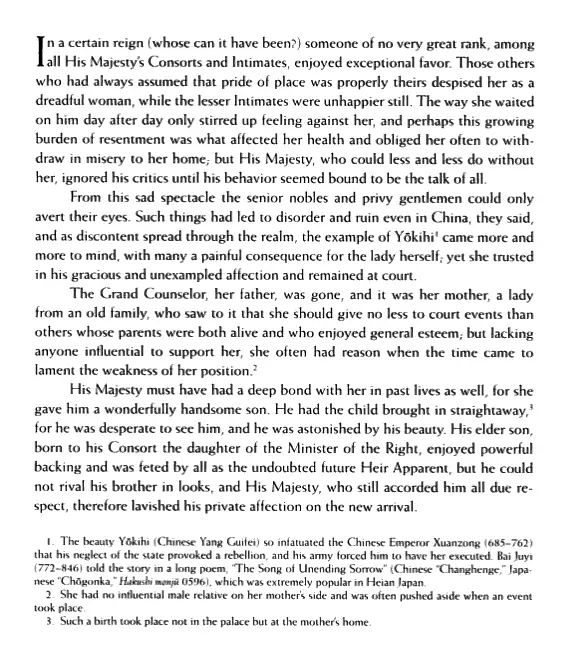
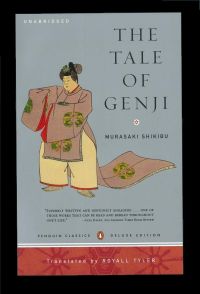
Get the Penguin Classics Deluxe Tyler translation of The Tale of Genji
Includes an introduction; endnotes; chronology (a really useful summary!); a glossary; notes about clothing and color; notes about offices and titles; a summary of poetic allusions; a list of characters (also really useful); a list of books and journal articles for further reading.
Available as a paperback (ISBN 9780142437148, 1216 pages).
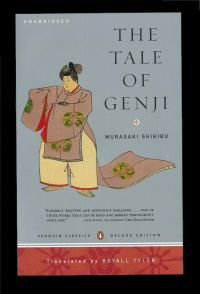
Get the Penguin Classics Deluxe Tyler translation of The Tale of Genji
Includes an introduction; endnotes; chronology (a really useful summary!); a glossary; notes about clothing and color; notes about offices and titles; a summary of poetic allusions; a list of characters (also really useful); a list of books and journal articles for further reading.
Available as an ebook (ISBN 9781101657621).
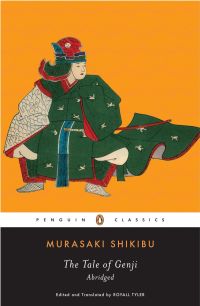
Get the Penguin Classics Tyler translation of The Tale of Genji
ABRIDGED edition. Includes an introduction, 12 chapters out of the first 17 chapters, some complete and some abridged or slightly abridged, and a list of books and journal articles for further reading.
Available as a paperback (ISBN 9780143039495, 352 pages).
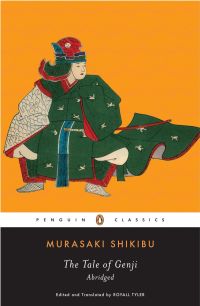
Get the Penguin Classics Tyler translation of The Tale of Genji
ABRIDGED edition. Includes an introduction, 12 chapters out of the first 17 chapters, some complete and some abridged or slightly abridged, and a list of books and journal articles for further reading.
Available as an ebook (ISBN 9781101097397).
Who is Kazuyuki Hijiya?
He’s a Japanese gastroenterologist, apparently!
He has a website about his English version of the Uji chapters of The Tale of Genji.
About the Hijiya translation of The Tale of Genji
- It contains the last ten chapters (45 to 54). These chapters are not about Genji at all, but about two men named Kaoru and Niou, members of a younger generation. There are far fewer characters, so the story is much easier to follow than the earlier parts of the book.
- The text uses nicknames for characters.
- There are some explanatory footnotes.
- There are illustrations by Saori Yamaguchi.
- The poems are printed in Japanese kanji and hiragana in two lines, with two-line English translations following.
Extract from the Hijiya translation of The Tale of Genji
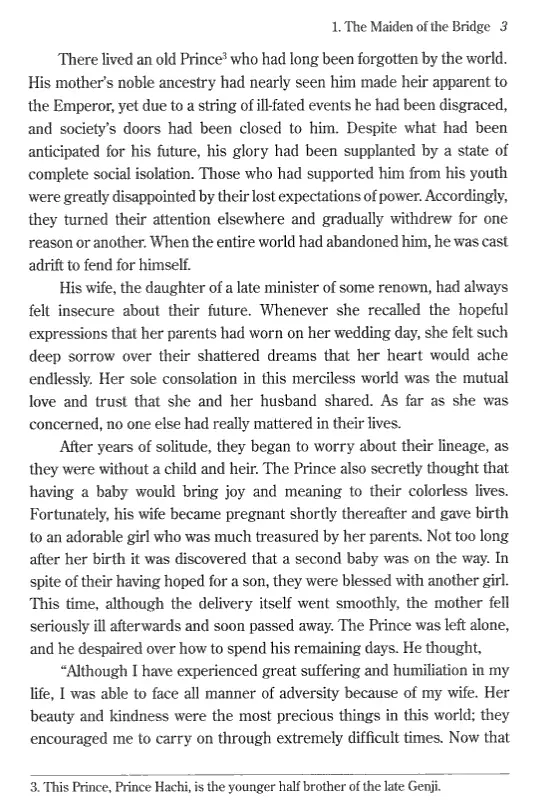
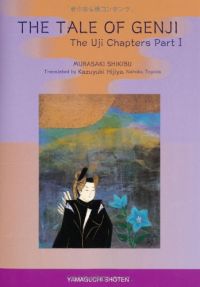
Get the Yamaguchi Shoten Publishing Company Hijiya translation of The Tale of Genji: The Uji Chapters
SELECTED CHAPTERS ONLY. Part I. Includes a prologue, chapters 45 to 50 (renumbered 1 to 6), and illustrations.
Available as a paperback (ISBN 9784841109139, 319 pages).
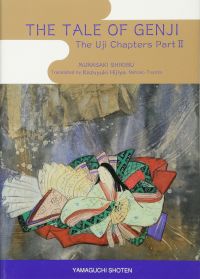
Get the Yamaguchi Shoten Publishing Company Hijiya translation of The Tale of Genji: The Uji Chapters
SELECTED CHAPTERS ONLY. Part II. Includes chapters 51 to 54 (renumbered 7 to 10), and illustrations.
Available as a paperback (ISBN 9784841109146, 220 pages).
Who is Dennis Washburn?
Dennis Washburn is an American professor, scholar, author, and translator specializing in Japanese Language and Literature.
About the Washburn translation of The Tale of Genji
- The text uses the traditional nicknames for characters.
- It is considered verbose as explanations are typically inserted into the text. You can see the difference in the length of the extract from Chapter 1 (according to my count, Washburn uses 569 words, Tyler uses 347).
- There are some notes at the ends of the chapters.
- There are no embedded illustrations.
- The poems are rendered in three lines.
If you feel strongly that a translation should be as literal as possible within the constraints of the grammar and vocabulary of the target language, you will be horrified at the extent to which Washburn departs from the source material, and you shouldn’t read Waley either. Waley made the text sound archaically Western; Washburn makes it sound too modern.
Arguably, though, whatever the text loses in terms of subtle style, it gains in readability in Washburn’s hands. If you want to pretend that you are reading a contemporary novel, and not a book painstakingly handed down through the ages and presented to you by scholars eager to signpost all their research, knowledge, and guesswork, this is the translation for you.
Extract from the Washburn translation of The Tale of Genji
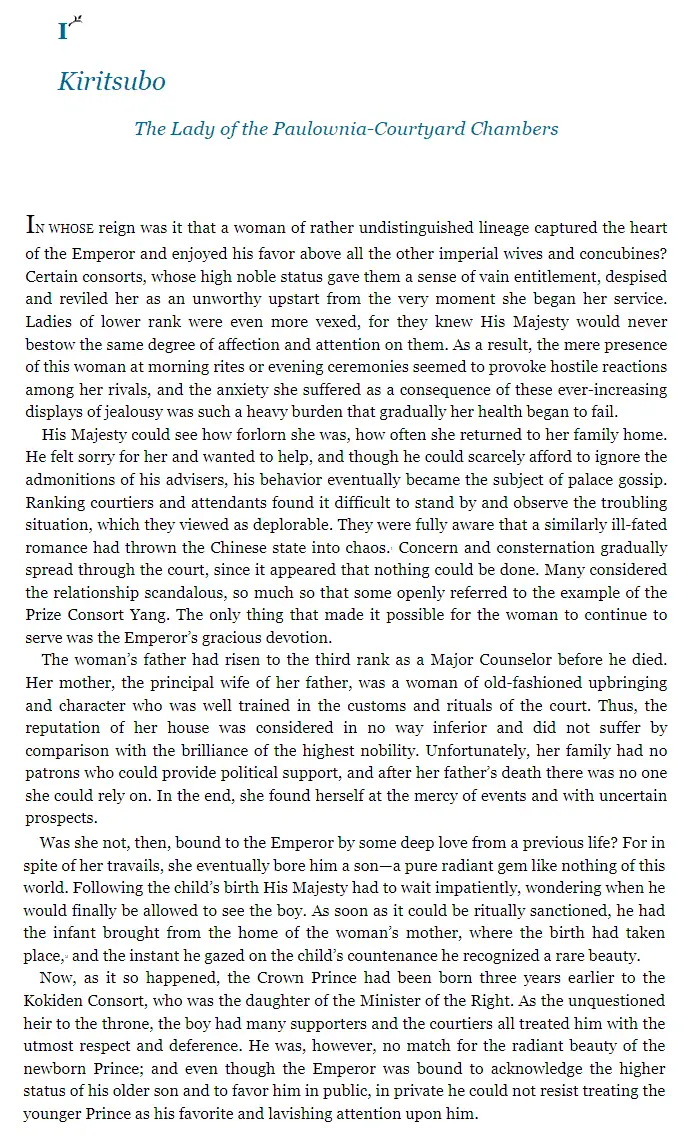
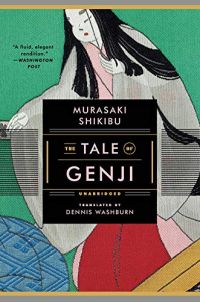
Get the Norton Washburn translation of The Tale of Genji
Includes an introduction and footnotes by Washburn.
Available as a paperback (ISBN 9780393353396, 1360 pages).
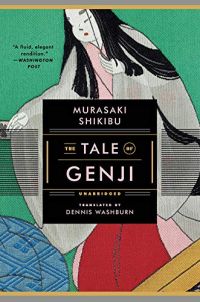
Get the Norton Washburn translation of The Tale of Genji
Includes an introduction and footnotes by Washburn.
Available as an ebook (ISBN 9780393248074).
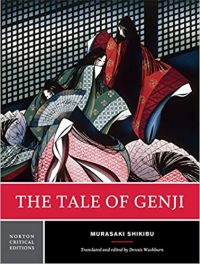
Get the Norton Critical Editions Washburn translation of The Tale of Genji
Includes an introduction and footnotes by Washburn; fourteen selections to enhance appreciation and understanding; nine essays on themes in the novel; an index of songs and poetry; three chronologies; and a selected bibliography.
Available as a paperback (ISBN 9780393933987, 1424 pages).
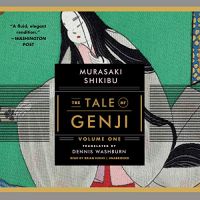
Get the Blackstone Audio Washburn translation of The Tale of Genji
Volume One: Narrated by Brian Nishii. 35 hours and 35 minutes.
Available as an audiobook.

Get the Blackstone Audio Washburn translation of The Tale of Genji
Volume Two: Narrated by Brian Nishii. 37 hours and 3 minutes.
Available as an audiobook.
Much has been published about The Tale of Genji. Below I’ve listed some books that I ran across that looked interesting, but the list is far from complete!
For more, see this bibliography created by Gaye Rowley, Australian scholar of Japanese Language and Literature.
Study Guides for The Tale of Genji
LitCharts literature guide for The Tale of Genji
GradeSaver study guide for The Tale of Genji
Penguin Reader’s Guide for The Tale of Genji
Manga Series: The Tale of Genji: Dreams at Dawn
“First published in [Japan in Japanese] the 1980s and 90s [in 13 volumes], Waki Yamato’s renowned [shojo manga] adaptation of Murasaki Shikibu’s 11th-century literary masterpiece is still gorgeous to behold and is considered one of the greatest novel-to-manga adaptations of all time.” As of 2019, digital English-language versions of all 10 volumes of manga are available online.
The illustrations don’t look very historically accurate, or even realistic, but on the other hand, stylized fantasy depictions of this kind are probably easier for contemporary readers to relate to than old paintings and woodblock illustrations.
Buy digital series from Amazon
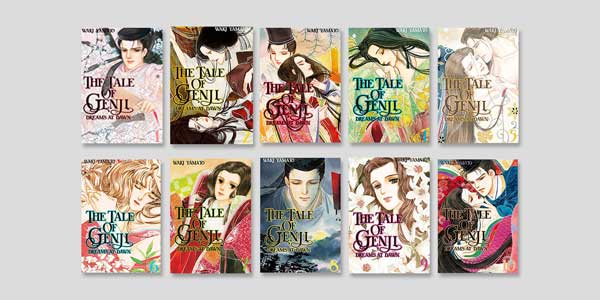
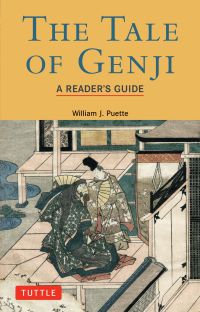
Get The Tale of Genji by Murasaki Shikibu: A Reader’s Guide by William J. Puette
This reader's guide, first published in 1983, includes: some maps, floor plans and illustrations; a list of Japanese chapter titles with translations; three core sections: (1) background information on the setting, author and translations (2) summaries of the chapters (3) suggestions for further study; references to help readers with characters’ names and ages; notes, a bibliography and a glossary.
Available as a paperback (ISBN 9784805310847, 192 pages).
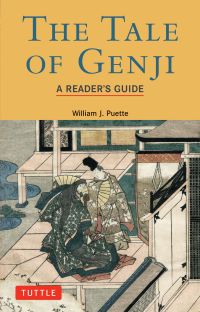
Get The Tale of Genji by Murasaki Shikibu: A Reader’s Guide by William J. Puette
This reader's guide, first published in 1983, includes: some maps, floor plans and illustrations; a list of Japanese chapter titles with translations; three core sections: (1) background information on the setting, author and translations (2) summaries of the chapters (3) suggestions for further study; references to help readers with characters’ names and ages; notes, a bibliography and a glossary.
Available as an ebook.
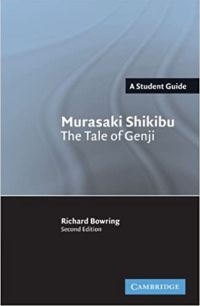
Get Murasaki Shikibu The Tale of Genji: A Student Guide by Richard Bowring
In addition to a preface and bibliography, this reader's guide includes: info about chapter titles; a genealogical chart; a chapter on “The cultural background”; a chapter on “The Tale of Genji”; a chapter on “Language and style”; a chapter on “Impact, influence and reception”; a guide to further reading.
Available as a paperback (ISBN 9780521832083, 122 pages).

Get Murasaki Shikibu The Tale of Genji: A Student Guide by Richard Bowring
In addition to a preface and bibliography, this reader's guide includes: info about chapter titles; a genealogical chart; a chapter on “The cultural background”; a chapter on “The Tale of Genji”; a chapter on “Language and style”; a chapter on “Impact, influence and reception”; a guide to further reading.
Available as a hardcover (ISBN 9780521832083, 122 pages).
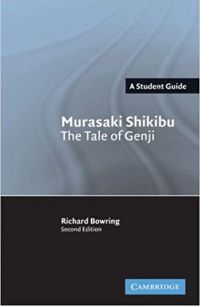
Get Murasaki Shikibu The Tale of Genji: A Student Guide by Richard Bowring
In addition to a preface and bibliography, this reader's guide includes: info about chapter titles; a genealogical chart; a chapter on “The cultural background”; a chapter on “The Tale of Genji”; a chapter on “Language and style”; a chapter on “Impact, influence and reception”; a guide to further reading.
Available as an ebook.
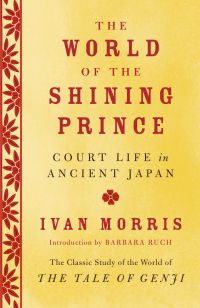
Get The World of the Shining Prince: Court Life in Ancient Japan by Ivan Morris
This old standby from 1964 includes: an introduction by Barbara Ruch; a preface and introduction by the author; Chapters on: (1) The Heian Period, (2) The Setting, (3) Politics and Society, (4) Religions, (5) Superstitions, (6) The ‘Good People’ and their Lives, (7) The Cult of Beauty, (8) The women of Heian and their Relations with Men, (9) Murasaki Shikibu, (10) Aspects of ‘The Tale of Genji’; Appendixes on: (a) Periods of Far Eastern History, and Rulers in Japan during the Heian Period, (b) A Note on the Tenth Century, (c) Is The Tale of Genjii complete? (d) Geneaological Tables, (e) Murasaki on the Art of Fiction, (f) Glossary; a Bibliography and Index.
Available as a paperback (ISBN 9780345803900, 368 pages).
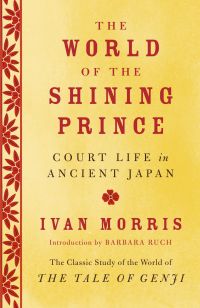
Get The World of the Shining Prince: Court Life in Ancient Japan by Ivan Morris
This old standby from 1964 includes: an introduction by Barbara Ruch; a preface and introduction by the author; Chapters on: (1) The Heian Period, (2) The Setting, (3) Politics and Society, (4) Religions, (5) Superstitions, (6) The ‘Good People’ and their Lives, (7) The Cult of Beauty, (8) The women of Heian and their Relations with Men, (9) Murasaki Shikibu, (10) Aspects of ‘The Tale of Genji’; Appendixes on: (a) Periods of Far Eastern History, and Rulers in Japan during the Heian Period, (b) A Note on the Tenth Century, (c) Is The Tale of Genjii complete? (d) Geneaological Tables, (e) Murasaki on the Art of Fiction, (f) Glossary; a Bibliography and Index.
Available as an ebook.
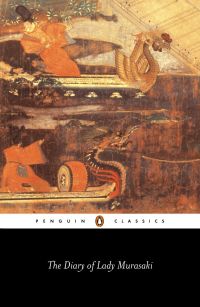
Get The Diary of Lady Murasaki by Richard Bowring
This is Richard Bowring's translation of The Diary of Lady Murasaki. It includes: a preface; a note on Japanese names and dates; an introduction about the cultural background, the author and the diary; the translated text of the diary; ground-plans and a map; a list of additional sources; a guide to further reading.
Available as a paperback (ISBN 9780140435764, 144 pages).
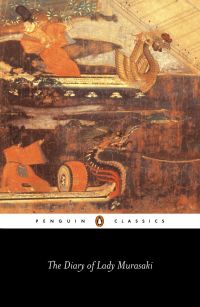
Get The Diary of Lady Murasaki by Richard Bowring
This is Richard Bowring's translation of The Diary of Lady Murasaki. It includes: a preface; a note on Japanese names and dates; an introduction about the cultural background, the author and the diary; the translated text of the diary; ground-plans and a map; a list of additional sources; a guide to further reading.
Available as an ebook.
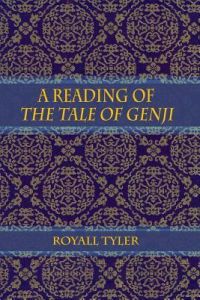
Get A Reading of The Tale of Genji by Royall Tyler
This is a collection of overlapping essays by Royall Tyler, Genji translator. It contains a preface and introduction and seven essays: (1) Genji and Murasaki: Between Love and Pride, (2) Genji and Suzaku: The Disaster of the Third Princess, (3) Genji and Suzaku: The Possibility of Ukifune, (4) Genji and The Luck of the Sea, (5) Pity Poor Kaoru, (6) Two Post-Genji Tales on The Tale of Genji, (7) Feminie Veils over Visions of the Male.
Available as a paperback (ISBN 9780994571533, 294 pages).
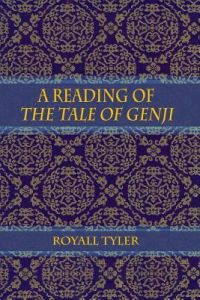
Get A Reading of The Tale of Genji by Royall Tyler
This is a collection of overlapping essays by Royall Tyler, Genji translator. It contains a preface and introduction and seven essays: (1) Genji and Murasaki: Between Love and Pride, (2) Genji and Suzaku: The Disaster of the Third Princess, (3) Genji and Suzaku: The Possibility of Ukifune, (4) Genji and The Luck of the Sea, (5) Pity Poor Kaoru, (6) Two Post-Genji Tales on The Tale of Genji, (7) Feminie Veils over Visions of the Male.
Available as an ebook.
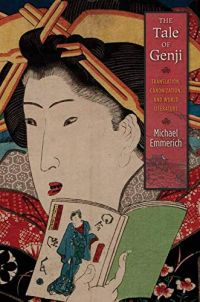
Get The Tale of Genji: Translation, Canonization and World Literature by Michael Emmerich
The author is said to be ‘reframing’, ‘thoroughly revising’, ‘upending’, and ‘remaking’ theories of our understanding of how The Tale of Genji got its place in world literature. I don’t know enough to know whose theory, in particular, Emmerich is contradicting, but perhaps that’s all right as he seems to want the book to be accessible even to non-specialists. Seems like an interesting book for considering the novel in the broadest possible context.
Available as a paperback (ISBN 9780231162739, 512 pages).
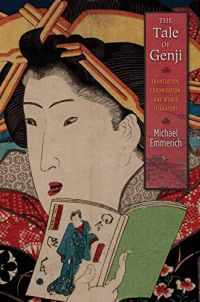
Get The Tale of Genji: Translation, Canonization and World Literature by Michael Emmerich
The author is said to be ‘reframing’, ‘thoroughly revising’, ‘upending’, and ‘remaking’ theories of our understanding of how The Tale of Genji got its place in world literature. I don’t know enough to know whose theory, in particular, Emmerich is contradicting, but perhaps that’s all right as he seems to want the book to be accessible even to non-specialists. Seems like an interesting book for considering the novel in the broadest possible context.
Available as a hardcover (ISBN 9780231162722, 512 pages).
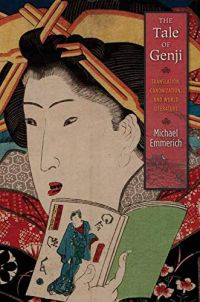
Get The Tale of Genji: Translation, Canonization and World Literature by Michael Emmerich
The author is said to be ‘reframing’, ‘thoroughly revising’, ‘upending’, and ‘remaking’ theories of our understanding of how The Tale of Genji got its place in world literature. I don’t know enough to know whose theory, in particular, Emmerich is contradicting, but perhaps that’s all right as he seems to want the book to be accessible even to non-specialists. Seems like an interesting book for considering the novel in the broadest possible context.
Available as an ebook.
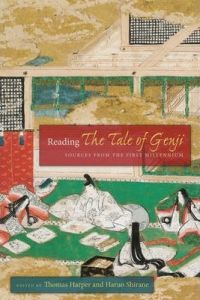
Get Reading The Tale of Genji: Sources from the First Millennium by Thomas Harper and Haruo Shirane
This book presents and comments on translations of Japanese documents showing how readers have reacted to The Tale of Genji throughout the ages. Seems like it would be a good way of finding out what we have in common with readers who lived hundreds of years ago… and how we differ.
Available as a hardcover (ISBN 9780231166584, 632 pages).
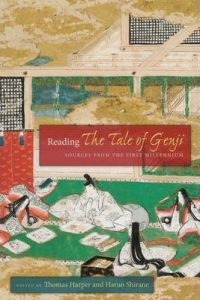
Get Reading The Tale of Genji: Sources from the First Millennium by Thomas Harper and Haruo Shirane
This book presents and comments on translations of Japanese documents showing how readers have reacted to The Tale of Genji throughout the ages. Seems like it would be a good way of finding out what we have in common with readers who lived hundreds of years ago… and how we differ.
Available as an ebook.
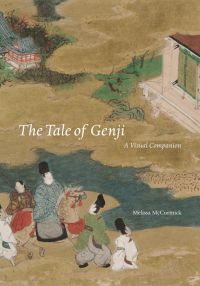
Get The Tale of Genji: A Visual Companion by Melissa McCormick
The title makes it sound like an encyclopedia, but it’s actually it’s an art book of 108 pages of paintings and calligraphy from an edition of The Tale of Genji published in 1510. The artwork is accompanied by chapter summaries and extracts from the Washburn translation of the text. You’ll get to see lots of depictions of standing screens, bunches of those ubiquitous clouds, and tons of those weird hats.
Available as a hardcover (ISBN 9780691172682, 288 pages).
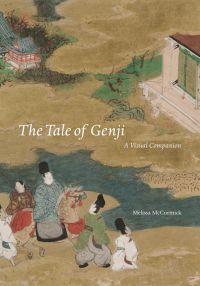
Get The Tale of Genji: A Visual Companion by Melissa McCormick
The title makes it sound like an encyclopedia, but it’s actually it’s an art book of 108 pages of paintings and calligraphy from an edition of The Tale of Genji published in 1510. The artwork is accompanied by chapter summaries and extracts from the Washburn translation of the text. You’ll get to see lots of depictions of standing screens, bunches of those ubiquitous clouds, and tons of those weird hats.
Available as an ebook.
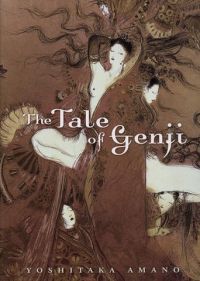
Get The Tale of Genji by Yoshitaka Amano
Amano’s artwork (consisting of 40 original paintings) is accompanied a bit of text about the story.
Available as an ebook (ISBN 9781595820631, 80 pages).
The Best Translation of The Tale of Genji
The best translation depends upon your purpose and personal preferences. (Say that five times fast…)
Do you want an abridged version?
If you aren’t looking to read the complete text, you have a number of options! Suematsu, Waley, Seidensticker, Hijiya, McCullough, and Tyler have all produced partial versions, and the Suematsu text is available free. You also have the option of reading a guide or an art book with chapter summaries, or even manga, if all you want to do is get to know the story and characters. There’s also a free audiobook!
Do you want ‘authentic’ or ‘accessible’?
If you want the oldest, most venerable English translation, which has accumulated its own authenticity over the last century, you want Waley.
If you want the most authentic translation in terms of style, you want Tyler, but proceed with caution as it’s difficult to keep track of the characters, footnotes notwithstanding.
If you want the most accessible translation, the one that conveys the actions and relationships of the characters the most explicitly to avoid confusion, you want Washburn.
If you want a good compromise between authenticity and accessibility, try Seidensticker. More authentic than Waley and more subtle than Washburn, but a lot less confusing than Tyler. The woodcut illustrations go a long way towards making the text feel like a novel.
Good luck and happy reading!

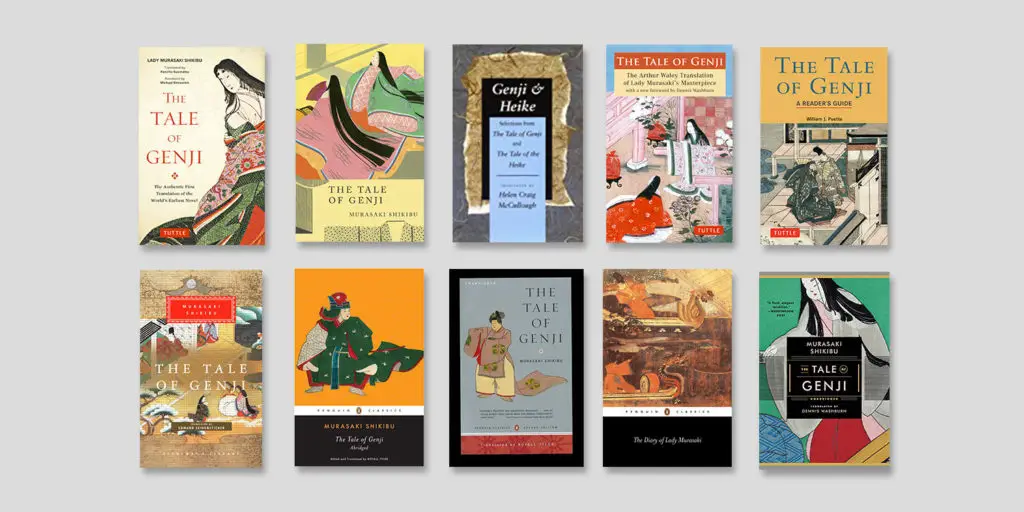
Pingback: The Tale of Genji: Impressions of a First-Time Reader – Introduction – Jaesthetics
Pingback: What was the World's First Novel - Who Wrote it
Thank you for these reviews and comments on various translations of “Genji”.
I have only read Waley’s translation ( Allen and Unwin one volume 1935) and some parts Seidensticker in order to compare the treatments of the poem on the death of a child, a letter to the parent, Seidensticker p185 vs Waley p.173
Quoting Waley;
This gentian flower that lingered among the withered grasses of the hedge I send you in remembrance of the Autumn that is passed. To you it will seem a poor thing in contrast to the flowers that are gone.
This may be a less accurate translation but IMO this is far superior to the poem in Seidensticker because it far more accords with the cult of beauty in the ancient Heian court as described in Van Morris’s The World of the Shining Prince. The “cult of beauty” pervades Waley’s translation
From this very limited survey I conclude that Waley has captured the essential spirit of that far off time, a spirit that may be inaccessible to translators without Waleys’ profound poetic sensibility.
Regards
from Gloucestershire England 23rd September 2023
Hi Duncan, thanks for sharing your thoughts and experience!
I know that Waley’s Genji and Waley’s Monkey (Journey to the West) are beloved despite the availability of other versions that are considered more accurate. Now, looking at his list of translations on Wikipedia, it seems he translated a LOT of Chinese and Japanese poetry. I think most translators are not poets, even though they are language experts, so it makes sense that Waley’s translations would differ in this way. I haven’t read his work, but your comment definitely makes me inclined to try it!
I ordered an abridged version on accident (Tyler) but I’m not sure if I should read it having never read the whole text. Or….is it a good idea in that I will be partially versed in the story and characters and therefor able to better enjoy the whole thing later?
Hi Ryan! I’m glad you’ve decided to read The Tale of Genji. The unabridged version is quite an investment of time.
There are different opinions about whether people should read abridged or adapted versions of classics in general. Some people say any reading is good reading, and whets the appetite for more. Others say only complete versions of literary works are worth spending any time on. I can see both sides. I think the decision should depend on the individual reader’s purpose, resources, ability, and taste. I think it also depends on the qualities of the alternate versions.
Tyler’s abridged version of The Tale of Genji isn’t a retelling of the entire story; it focuses on the beginning. (It includes versions of 12 chapters out of the first 17 chapters. There are 54 chapters in total.) Other abridged versions similarly include chapters from the first half of the work.
Since you intended to read the entire Tale of Genji, I think it would make sense to just read the complete work, since the shorter version seems to overlap quite a lot with the beginning of the complete one.